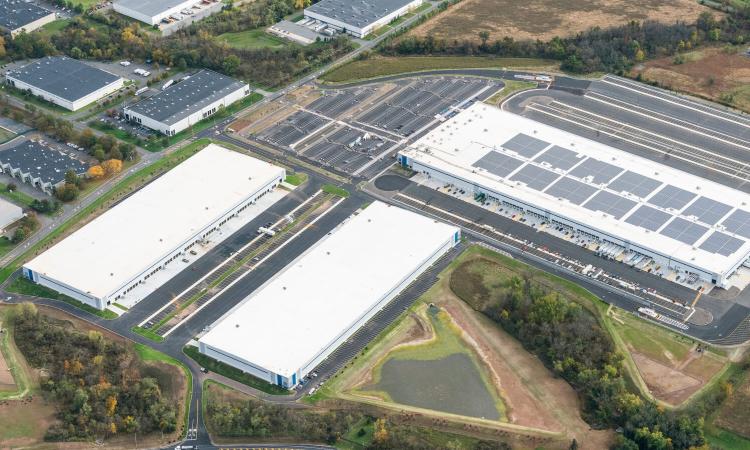Bridge Industrial (“Bridge”), a privately-owned, vertically integrated real estate operating company and investment manager, showcases dedication to comprehensive and accelerated portfolio-wide decarbonization by committing to ULI Greenprint, reaching net-zero status for primary operations, and embracing strategies to reduce emissions throughout its supply chain.
To jumpstart efforts in 2021, Bridge identified emissions related to primary operations (effectively Scope 1 and Scope 2 emissions) across its offices and operational assets – eight corporate offices and 19 industrial warehouse facilities spread throughout the U.S. and U.K. – and secured Renewable Energy Credits (RECs) and carbon offsets to achieve net-zero carbon status across primary operations. This milestone puts Bridge well ahead of the ULI Greenprint commitment – to which Bridge became an official signatory earlier in the year – of reaching net-zero operations by 2050.
“We wanted to make sure we covered our own primary operations before looking at strategies to help tenants reduce their own emissions. We understand that tenant activity accounts for the majority of our total emissions, and because we don’t have direct control over their operations, it will take a cooperative approach for us to reach our carbon reduction goals,” remarked Francesca De Amicis, Vice President, Operations and Sustainability at Bridge.
Forging ahead toward net-zero emissions across all operations, Bridge is working to decarbonize its entire supply chain by addressing the embodied carbon in property development and collaborating with its customers to align decarbonization strategies with its tenants. The associated emissions from this upstream construction and downstream tenant activity (effectively Scope 3 emissions) constitute most of Bridge’s total carbon emissions.
Bridge continues to be proactive in mitigating carbon intensity along its supply chain. To address upstream construction, Bridge has partnered with BranchPattern, a consultant on LEED for New Construction, to evaluate net-zero strategies for minimizing embodied carbon and optimizing building performance. For downstream activity, Bridge has added green lease clauses in contracts that require tenants to share pertinent utility data and prioritize energy efficient operations. Through tenant engagement, Bridge is working to gather data and identify opportunities – such as potential for on-site renewable energy systems – for rapid reduction of carbon emissions.
Bridge’s ongoing efforts to offset emissions from both primary operations and supply-chain activity reflects the company’s ambition to leading the industrial real estate industry toward meaningful decarbonization that aligns with science-based targets to keep climate change within 1.5°C of pre-industrial levels. Through effective collaboration and strategy execution, Bridge’s emissions reduction framework will help decarbonize both Bridge’s supply chain and its tenants’ primary operations.
“We are happy with the initiative our team has taken to embedding decarbonization targets into our corporate strategy. We recognize that there is a lot of work ahead that will require diligent efforts and strong involvement from all Bridge stakeholders, and we feel prepared and determined to meet the challenge,” said De Amicis.

